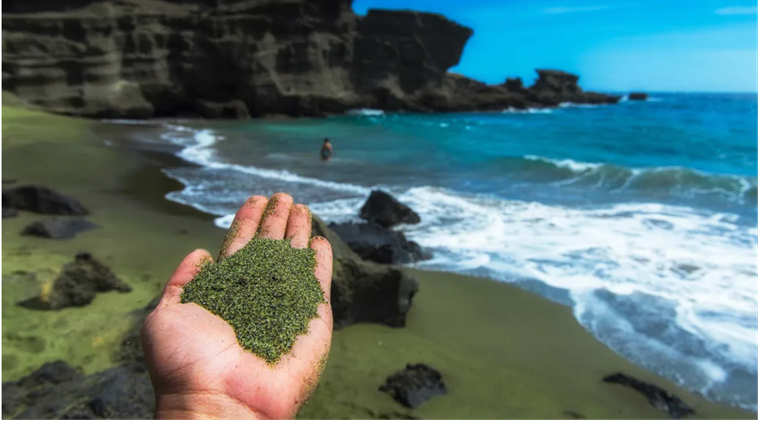Toon has a Master’s Degree in Civil Engineering (major in Energy) from the KU Leuven. He completed a 6 month internship as Derivates Analist. He work as a Junior Climate Consultant for Econopolis Climate and works on advisory projects related to climate & energy. Toon is also founder of Stroomloop, a unique trailrunning experience.
A Green Beach for a Greener Planet?
In the fight against climate change, every action matters. That's why extensive research is being conducted to explore "mitigation strategies" that aim to reduce the harmful impact of carbon emissions on global warming. As we firmly believe that there is no one-size-fits-all solution, we advocate for keeping all technological options open on the path to achieving net-zero emissions.
Exploring Enhanced Weathering and Olivine's Carbon-Capturing Power
One fascinating avenue worth exploring is the utilization of ‘natural processes’ that can remove carbon from the atmosphere without human intervention. While most people are familiar with the role of plants and trees in absorbing CO2 through the biological process of photosynthesis, there is a lesser-known family of processes called "enhanced weathering" that can be deployed on certain minerals and rocks. Weathering refers to chemical erosion processes, where the molecular structures of minerals are altered upon exposure to atmospheric, enabling them to absorb carbon and form stable carbonate minerals. Among these minerals, Olivine, named for its olive-green color, is particularly noteworthy in this regard. It is one of the more intriguing minerals chosen for this type of process. Astonishingly, conservative estimates indicate that just one tonne of finely ground olivine can store an equivalent amount of CO2 – roughly equivalent to the emission generated by taking a plane for a two-person city trip to the beaches of Barcelona. This makes olivine a highly valuable tool in our pursuit to removing CO2 from the air.
Overcoming Challenges for Efficient Carbon Capture
However, there is a challenge to overcome. While a tree can store one ton of carbon in a couple of decades (depending on the tree species), olivine takes ten times longer to achieve the same result. To address this issue, ongoing research aims to ‘enhance’ the olivine carbon-capturing process, making it more efficient. This can be achieved by grinding the mineral into finer grains, thereby increasing its surface area and exposure to the air. Additionally, spreading it in areas that undergo frequent movement, such as beaches, can expedite the process. Although this industry is still in its early stages, it holds immense promise, especially once sub-commercial companies (organizations that operate with the aim of achieving non-financial goals rather than generating profit) demonstrate the feasibility of this technique.

Figure 1: A green beach supplied with olivine grains. Source: Project Vesta
Vesta's Impact and Belgium's Expertise in Coastal Carbon
One remarkable example is the San-Francisco based company Vesta, which has conducted experiments with olivine grains dispersed on beaches in the United States. Their efforts have transformed the North Sea Beach in New York State into captivating landscapes of green beaches. Currently, they are investigating the potential impact on water and soil quality to ensure there are no adverse effects on marine ecosystems. If the results prove positive, this could open up a range of possibilities for enhancing beach and land areas. Interestingly, Belgium has significant expertise in this research field. The Coastal Carbon research group, a collaboration between the University of Antwerp (UA), Ghent University (UGent), and the Flanders Marine Institute (VLIZ), is actively investigating this domain. This advancement aligns with the growing trend of ecotourism, offering exciting prospects for image enhancement and sustainable tourism experiences. Perhaps, in a couple of years you may even stumble upon a green beach during that next city trip to Barcelona!
